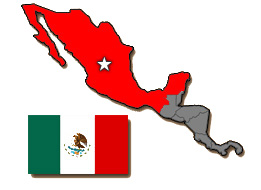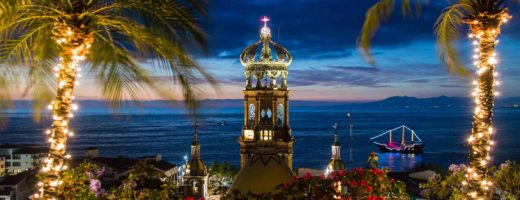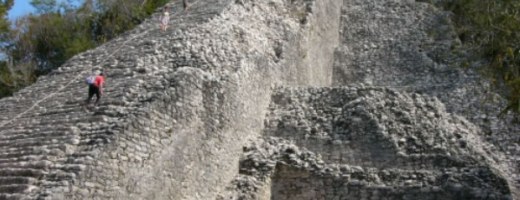Gay Puerto Vallarta By Richard Ammon GlobalGayz.com August 2017 The City Last month I spent a week in Puerto Vallarta on Mexico’s west coast. It was my first visit and my impression was favorable. It is a bustling modern Central American urban city with all that it means: a busy international airport, shopping malls, a
LGBT rights in Mexico have expanded in recent years, in keeping with worldwide legal trends. Homosexuality has been legal since the adoption of the French Penal Code during occupation during 1862-1867. Until 1998, laws against public immorality or indecency could be used against homosexual acts. The Mexican Constitution was amended in 2001 to prohibit discrimination based, between other factors, on sexual orientation. A federal anti-discrimination law to protect sexual minorities was passed in 2003. The law also created a National Council to enforce the law. Otherwise, political parties tend to ignore LGBT rights issues, and few LGBT Mexicans run for public office. The age of consent is 18. In November 2006, civil unions (Sociedad de Convivencia) were legalized in Mexico City for same-sex and different-sex couples, offering almost the same legal rights as marriage within its city limits, minus adoption rights. The states of Colima, Michoacán, Jalisco, Guerrero, State of Mexico, Puebla and Veracruz are also considering similar laws. Gay life thrives in Mexico in its large cities and resorts. The center of the gay community in Mexico City is the Zona Rosa, near the city center. Puerto Vallarta, Monterrey, Tijuana and Guadalajara are large cosmopolitan cities that have a growing gay scene. However, the situation outside of these centers tends to be more homophobic.

Mexico – Mexico City: Chapultepec Castle
Chapultepec Castle has been used for numerous functions over the last three hundred years. It was on this hill that the Aztecs made a temporary home after arriving from northern Mexico in the 1200s. In the early 20th century it was home to Emperor Maximilian of Habsburg until he was executed. For a while it
Mexico – Playa del Carmen and Tulum
Playa del Carmen and Tulum Playa del Carmen is a busy coastal city popular with tourists. It is the center of the Riviera Maya concept, which runs from south of Cancún to Tulum and the Sian Ka’an biosphere reserve. Playa is a stop for several cruise ships which dock at the nearby Calica quarry docks,
Mexico – Coba Village and Coba Mayan Ruins
The ruins here date from about 500-800 CE and are spread across many kilometers. The site contains several large temple pyramids, the tallest, known as Nohoch Mul, being 42 meters in height. The bulk of Coba’s major construction seems to have been made in the middle and late Classic period, about 500 to 900, with most of the dated hieroglypic inscriptions from the 7th century. However Coba remained an important site in the Post-Classic era and new temples were built and old ones kept in repair until at least the 14th century, possibly as late as the arrival of the Spanish
Mexico – Chichen Itza
Chichen Itza Ruins The ruins at Chichen Itza date from about 600-900 AD and are a mix of Mayan and Toltec styles. Chichen Itza is a large pre-Columbian archaeological site built by the Maya civilization located in the northern center of the Yucatán Peninsula, in the Yucatán state, present-day Mexico. Archaeological data, such as evidence
Mexico – Ek Balam Ruins
Ek’ Balam is a pre-Columbian archaeological site in Yucatán built by the Maya civilization. There are 45 structures, including the Acropolis, the largest structure at Ek’ Balam. It contains the tomb of Ukit Kan Le’k Tok’. It measures 146 meters across, 55 meters wide and 29 meters tall. Read the story about gay Mexico
Mexico – Cancun
Cancun is divided into two distinct areas: the upscale grand hotels along the beach for foreign tourists, and the working class downtown Centro district, (2 miles from the beach – final 15 photos below) where the hotel workers live and shop (at Sears and Wal-Mart, etc.). In the Centro are Cancun’s three gay bars (and
Mexico – Morelia City
Morelia is the capital of the state of Michoacan, about 100 miles west of Mexico City. It’s a historic city with more than 1000 colonial buildings and churches and became a UNESCO World Heritage Site in 1991. Morelia was officially founded on May 18, 1541 by the first viceroy of New Spain Antonio de Mendoza,
Mexico – Rio Lagartos
On the north coast of Yucatan is Rio Lagartos (alligator river), a small town within a 118,00 acre nature preserve – the Biosphere Special Reserve – that’s home to more than 200 species of native and migratory birds and other wildlike, including flamingos cormorants, gigantic white pelicans, seagulls, herons, egrets, maybe a few spoonbills and
Mexico – Mexico City: Zona Rosa, Alameda Park, Zocalo Square
Zona Rosa is a business and entertainment district near the center of Mexico City. It is one of the city’s most touristy areas, filled with hotels, dance clubs, restaurants, bars and live bands. Demographically, it boasts a healthy gay population as well as a relatively high concentration of Korean immigrants. Mexico City’s financial heart is
Mexico – Patzcuaro and Rural Area
Pátzcuaro is a charming colonial city high in the Sierra Madre mountains (altitude 7200 feet) about fifty miles west of Morelia. It’s filled with historical architecture and shops with local colorful handicrafts . Around the two town squares are classic arched facades. The Pátzcuaro area is well known for it’s rustic, carved wooden furniture and
Mexico – Mexico City Gay Marriage Rally
On Valentines’ Day 2005 a public pro-gay marriage rally was held in central Mexico City at Alameda Park. Hundreds of LGBT couples showed up amid speeches, music and dancing to sign their names on a "Registro de Sociedades de Convivencia" form. The ‘officials’, dressed in academic caps and gowns were members of PFLAG (Parents and



